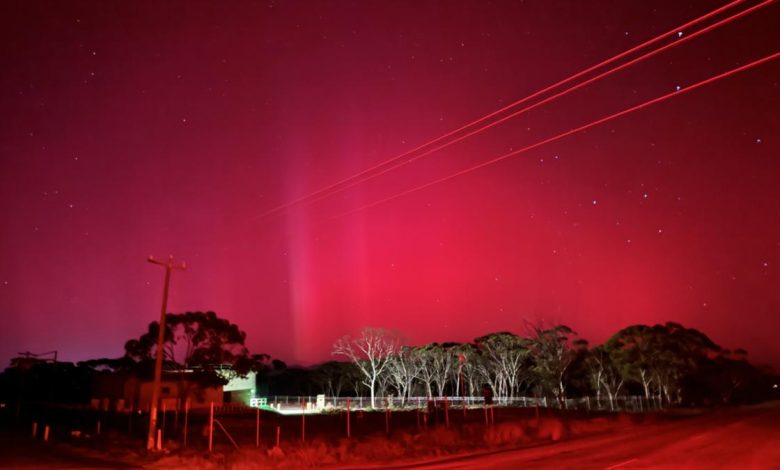Residents in South Australia and Western Australia treated to vibrant Southern Lights display

[ad_1]
Australians in two states were lucky enough to witness a visually stunning phenomenon on Saturday caused by a strange weather an event.
Those awake in the early hours of Saturday morning across South Australia and Western Australia were treated to an endless sky full of pink and red hues thanks to the Southern Lights (Aurora Australis).
Photographer Stuart Milde captured the light show from his home in Pinkerton Plains in mid-northern South America.
“One of the best I’ve seen, easily visible to the eye,” he said.
“Then the clouds lifted at dawn, I was lucky enough to get clear skies for these photos.”
Truck driver Trent Hristakakis was able to catch a glimpse of the lights at the Norseman in Washington’s Goldfields-Esperance area around 5:15 a.m.
“I’m an interstate truck driver driving Adelaide to Perth, I’ve been driving the highway for 17 years and I’ve never seen anything like this,” he told 7NEWS.
“Stunning.”
Although the aurora borealis can be seen year-round, it is most commonly seen in winter and during the vernal equinox in September.
The phenomenon is best seen from the southernmost side possible, namely Tasmania, but a geomagnetic storm means the spectacle is much brighter than usual, therefore visible more widely.
Ann a storm watch warning was issued by the United States National Weather Service’s Space Weather Prediction Center (SWPC) on Friday AEST.
According to the SWPC, this is the first watch issued by the department since January 2005.
The Bureau of Meteorology (BoM) also shared its own warning, saying the severe storm could cause power outages and disrupt GPS and communications across Australia this weekend.
The bureau’s Australian Space Weather Prediction Center said a G4 storm – the second highest classification – could potentially disrupt critical infrastructure “such as power grids, causing power outages”.
“Satellite services affecting communications and global position, navigation and weather services that use high frequency radio communication” may also be affected.
The SWPC observation comes after numerous ground-bound coronal mass ejections (CMEs) were observed by forecasters this week.
CMEs are “large plasma ejections and magnetized particles from the Sun’s corona,” according to the SWPC.
At least five CMEs have been observed in recent days, and the particles may begin arriving at Earth by Friday afternoon, according to officials.
CMEs are expected to continue arriving until Sunday, leading to an “unusual event.”
In a geomagnetic storm, particles ejected from the sun cause disturbances in the Earth’s magnetosphere.
Particularly strong storms can affect Earth’s ionosphere, adding energy in the form of heat that can “increase the density and density distribution in the upper atmosphere, causing additional drag on satellites in low Earth orbit.” according to SWPC.
As a result, disruptions to navigation systems, radio communications and power grids are possible, although it is unclear whether the approaching storm will be strong enough to cause these impacts.
The storm will also bring a much more vibrant Northern Lights or Aurora Borealis that can be seen as far south as Tennessee or even Alabama in the US.
– With NBC
[ad_2]




